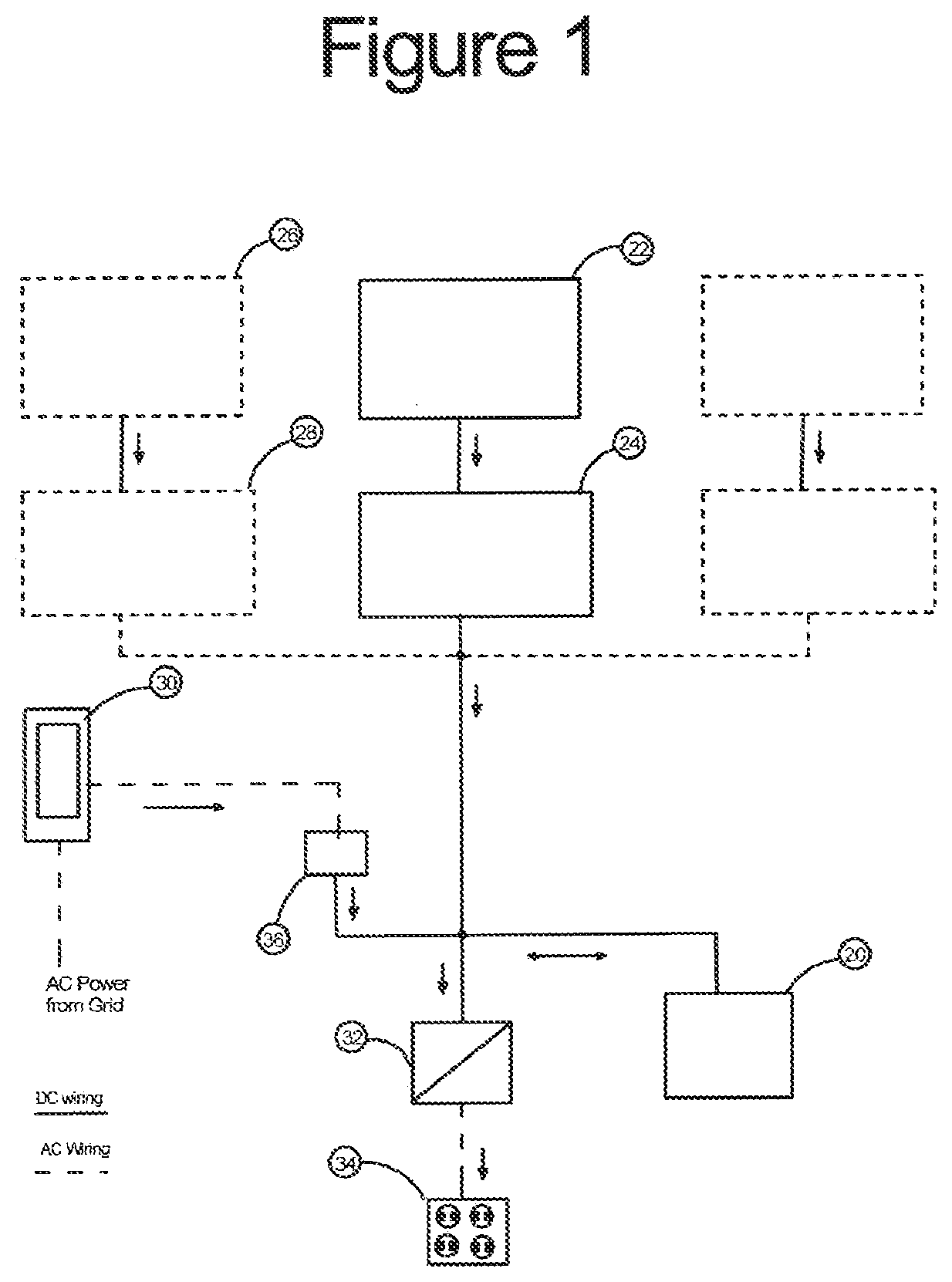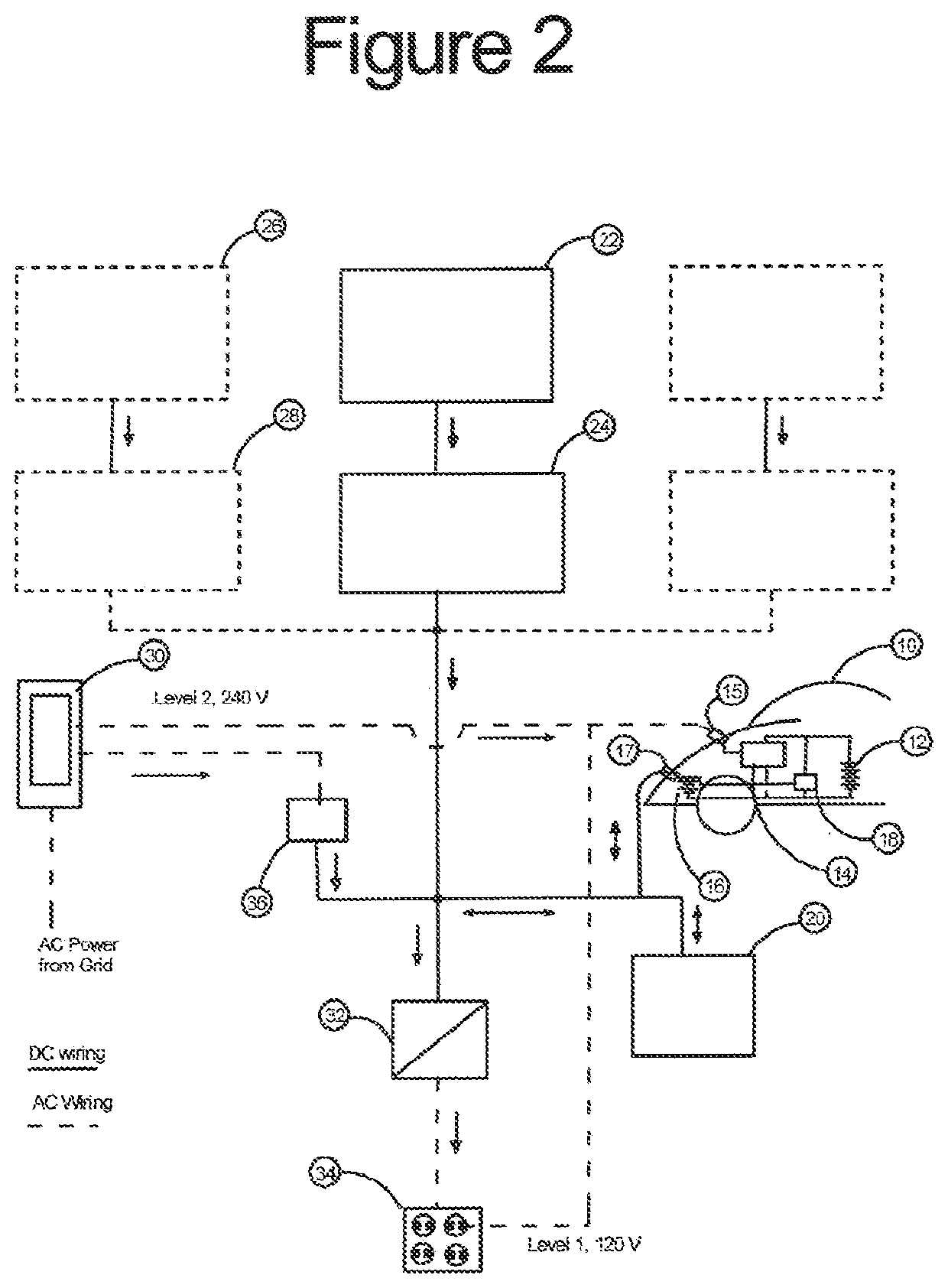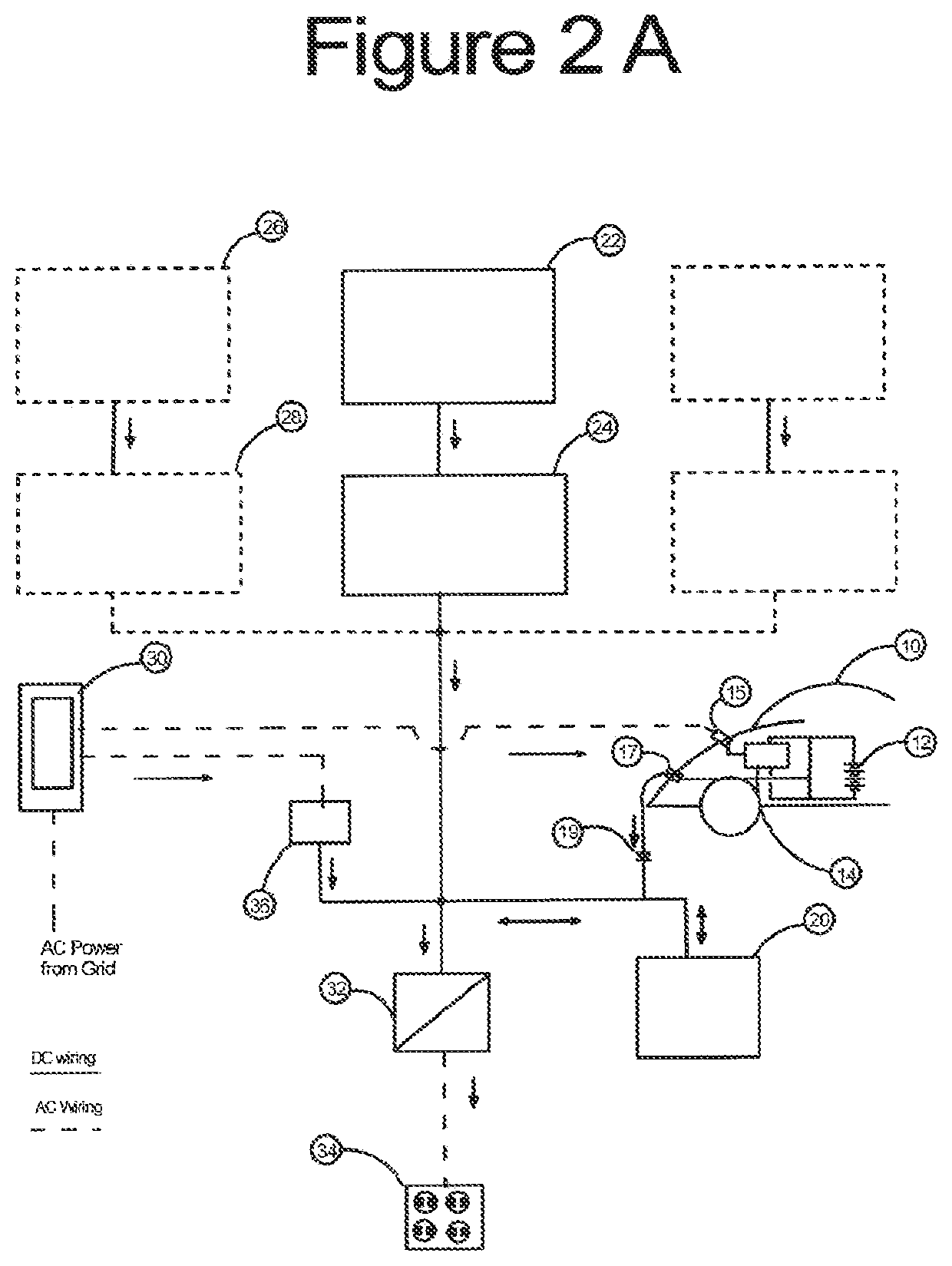Non Grid-Tied Vehicle-SoIar Uninterruptable Power System
a power system and non-grid technology, applied in emergency power supply arrangements, dc-ac conversion without reversal, greenhouse gas reduction, etc., can solve the problems of uncontrollable output, high variability, and high cost of magnum energy systems, so as to eliminate a major installation cost, the effect of reducing the cost of installation and reducing the cost of operation
- Summary
- Abstract
- Description
- Claims
- Application Information
AI Technical Summary
Benefits of technology
Problems solved by technology
Method used
Image
Examples
example
[0048]An installation similar to FIG. 2 has been built and tested. The basic components of the installation are shown schematically in FIG. 3 along with instrumentation inputs to permit measurement of key operating parameters. A single 200 Watt 36 Volt solar panel provided 12 V power through a Solar Boost 154i battery charge controller to the DC node. A 20 Amp fuse and a 100 Amp / 50 MV shunt provided safety and measurement of solar input.
[0049]120 V AC power from a sub panel in the Penn State University GridSTAR Solar Training Center at the Philadelphia Navy Yard was fed to the 30 Amp. battery charger, which was connected to the node through a 400 A, 50 mV shunt. The charger was a simple rectifier, which put out a voltage higher than the solar system. To allow the solar system to contribute, the charger input voltage was reduced by 20% through a buck transformer. The charger input was monitored by an AC current transformer putting out 5 V DC at 10 Amps AC.
[0050]The charger was connec...
PUM
 Login to View More
Login to View More Abstract
Description
Claims
Application Information
 Login to View More
Login to View More - R&D
- Intellectual Property
- Life Sciences
- Materials
- Tech Scout
- Unparalleled Data Quality
- Higher Quality Content
- 60% Fewer Hallucinations
Browse by: Latest US Patents, China's latest patents, Technical Efficacy Thesaurus, Application Domain, Technology Topic, Popular Technical Reports.
© 2025 PatSnap. All rights reserved.Legal|Privacy policy|Modern Slavery Act Transparency Statement|Sitemap|About US| Contact US: help@patsnap.com



